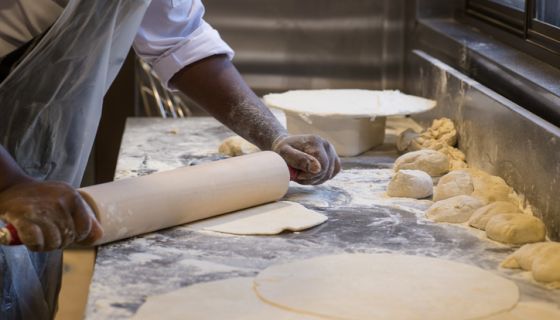If you’re a diehard fan of mac and cheese, French fries, and the occasional ice cream cone, thank James Hemings, the first African-American master chef whose legacy has yet to be properly celebrated.
Source: wilpunt / Getty
The enslaved culinary wizard revolutionized American cuisine throughout the late 1700s and helped to introduce some of the most groundbreaking cooking techniques to the American culinary repertoire.
But who is he and why has his story primarily been forgotten? For Black History Month, let’s honor the “Ghost in America’s Kitchen” by taking a look back at his historic contributions.
Who was James Hemings?
Hemings was the brother-in-law and enslaved property of Thomas Jefferson. The cooking icon was born in 1756 to Elizabeth Hemings, an enslaved African American woman who worked for the wealthy Wayles family in Virginia, according to Monticello. His father is believed to have been a white man, but his identity is unknown, James was also an older brother of Sally Hemings. As a child, Hemings was sent to live with his mother’s half-sister, Martha Wayles, who was married to Thomas Jefferson.
Hemings’s life would change in 1774 when Jefferson took him to Paris, France to train him as a chef in the French culinary tradition.
Hemings received formal culinary training in Paris, working in some of the most prestigious kitchens of the time. He learned how to make classic French dishes such as bouillabaisse, coq au vin, and crème brûlée. He also learned the art of baking. The iconic chef grew famous for his delicious French breads, croissants, and pastries.
Revolutionizing American Cuisine
In 1790, Hemings returned to the United States armed with a wealth of culinary knowledge that would transform American cuisine. He introduced new cooking techniques, such as sautéing, that were not commonly used in America at the time. He also introduced new ingredients, such as macaroni and cheese, which had never been seen in the United States before.
Hemings’ influence on American cuisine was profound. He created dishes that would become staples of American cuisines, such as fried chicken and French fries. He also introduced new methods of cooking, such as deep-frying, that are still widely used today.
In 1796, Hemings became the head chef at Monticello, a position he held for five years. During this time, he continued to experiment with new ingredients and cooking techniques. He introduced Jefferson to the joys of French wine and champagne, and he even created his own recipe for vanilla ice cream, which Jefferson loved, reports Monticello.
Legacy and Impact
Hemings’ impact on American cuisine cannot be overstated. He was one of the first chefs to bring French cooking techniques and ingredients to the United States, and his influence can still be seen in American cuisine today. He was also one of the first African Americans to achieve a level of success in the culinary world, despite the oppressive circumstances of his life.
His story is a testament to the resilience and ingenuity of enslaved African Americans, who managed to achieve great things despite the odds stacked against them. Today, his legacy is being celebrated by culinary historians and chefs around the world. Chef and documentarian Ashebll McElveen recently explored the hidden figure’s life and culinary rise in a documentary called James Hemings: Ghost in America’s Kitchen.
The doc is currently streaming on Prime Video.
Watch the trailer below.



